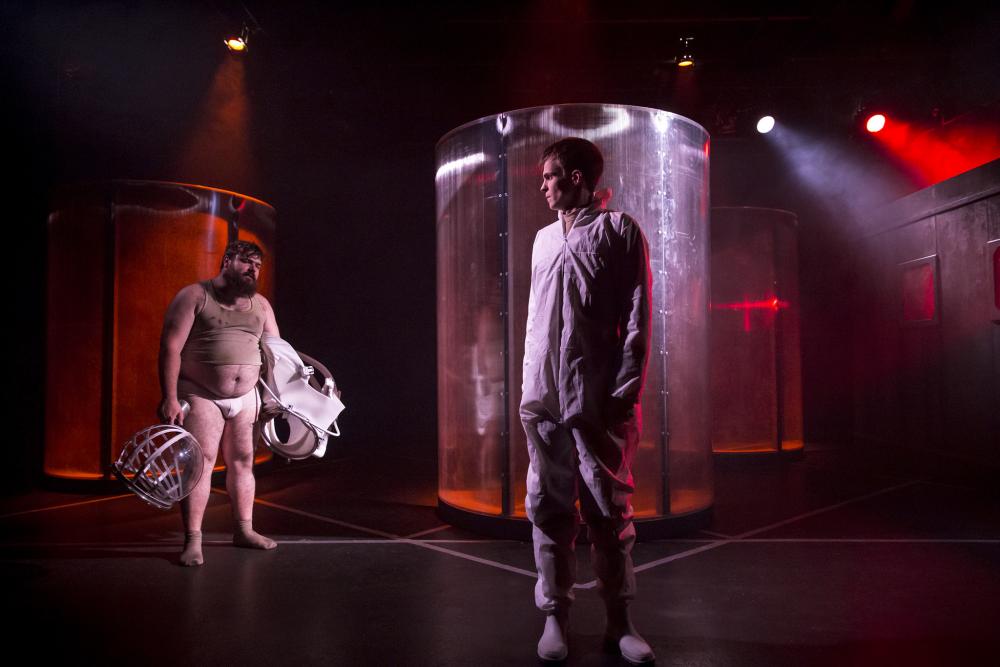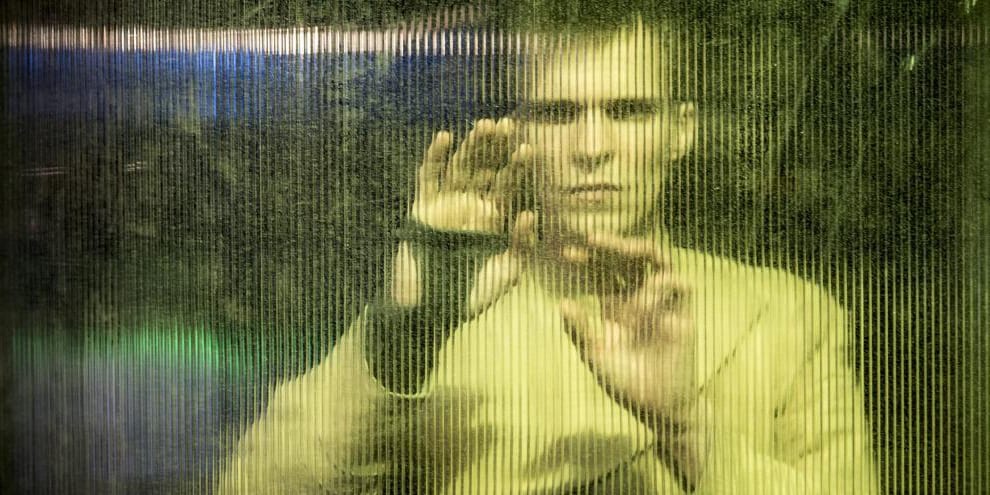It is quite rare to see works of science-fiction adapted to the stage these days: it is not considered as a noble genre, and the development of large budget science-fiction films encouraged the use of spectacular special effects when it comes to the representation of futuristic or spatial imagery. Fortunately, a small production I had the chance to see at the Avignon ‘Off’ festival proves that it is possible to create a perfect science-fiction play from almost nothing : it is Solaris, directed by Rémi Prin.
The play is my first contact with Stanislas Lem’s classic text, as I have neither read his book nor seen any of the cinematic adaptations that were made from it. This makes me twice as curious to discover the play. As soon as I enter the tiniest theater of the Espace Saint Martial (49 seats !), I am launched into another time and place.
The main character of the play, therapist Kris Kelvin, is sitting in his capsule, one meter from the first row of seats, examining every spectator that comes in. His futuristic costume, the design of the capsule – a sort of half horizontal tube made of ribbed plastic – and the immersive electronic soundtrack immediately set the tone of the play. The actors and the spectators are all in the same ship.
Kris Kelvin (Thibault Truffert), a confident and somewhat arrogant therapist is called to join the Solaris spaceship where three of his colleagues seem to be in psychological distress. Once on board, he finds that the leader of the mission has killed himself, and the two remaining crew members (Quentin Voinot and Gabriel Laborde) explain to him that they have seen unwanted and mysterious ‘visitors’ on the ship.

The set, designed by Benjamin Gabrié and Suzanne Barbaud, is made of simple elements (a couple of the aforementioned capsules and a laboratory that remains closed) that move around to create a labyrinthic spaceship. The atmosphere becomes progressively more claustrophobic with the help of colourful, hazy lights and smoke that draw the play near to the fantastic genre.
In addition to the show’s wonderful scenography, its cast is brilliant too. Quentin Voinot, as the terrified and hot-headed Snaut admirably gives life to the dialogues, adapted from Lem by Benjamin Gabrié. The duo formed by Thibault Truffert and Louise Emma Morel is beautifully realised. The two of them become progressively vulnerable, and Morel (who reminds of a young Anna Karina) has the remarkable ability to create an uncanny feeling about her, which can only trouble the spectator.
The whole thing is held together by the wonderful soundtrack, composed and performed by Léo Grise. His ethereal music and sound design seems to be the embodiment of Solaris, the living planet that haunts the characters. Its invisible and impalpable presence embraces the whole theatre and makes the play’s final mystery impossible to resolve.
Read Thibault Elie’s interview with the play’s director, Rémi Prin.
Summary in French:
Le metteur en scène Rémi Prin réussit le pari de présenter de la science-fiction au théâtre, loin de l’esthétique grandiloquente rendue commune par les blockbusters américains. La recette, assez simple en apparence, est terriblement efficace : il suffit de quelques éléments de décor aux accents futuristes, de fumée pour obscurcir l’espace et épaissir le mystère, de lumières colorées à l’esthétique très sixties et de quatre fabuleux acteurs qui portent un texte sans faute. N’oublions surtout pas l’atmosphère sonore du spectacle, (créée par Léo Grise) qui achève de transporter le spectateur dans l’orbite mystérieuse de Solaris.
L’interview de Rémi Prin par Thibault Elie pour Plays to see est à lire ici.

